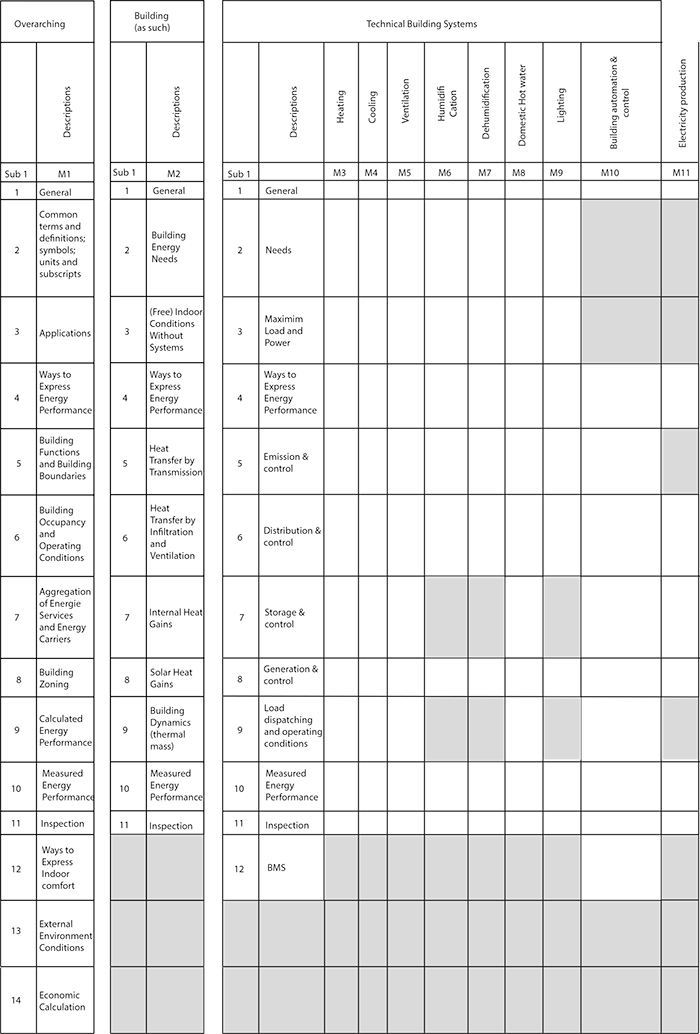Modular Structure
The modular structure
The set of EPB standards is modular and flexible, making it the perfect basis for future developments like innovations, new insights and new market demands.
Short video introduction
Let's introduce the subject with a short (6 minutes) video (opens in new window):
"The EPB Standards Explained - Your map for the EPB standards"
The modular structure
An overarching reference modular structure is used to identify:
- all required parts of the assessment procedure and provide an overview;
- the modules covered by the EPB standards and to support specifications given to standard writers of the EPB modules;
- the connection between the EPB standards (e.g.: calculation, expression of the energy performance).
This structure also enables and facilitates a step-by-step implementation in any national or regional context.
The over-arching modular structure has the following four main areas:
- M1 Overarching standards
- M2 Building (as such)
- M3 - M11 Technical Building Systems under EPB
- M12 - M13 Other systems or appliances (non-EPB)
NOTE: the term 'overarching module' only partly overlaps with the term 'overarching standard' in the new EPBD (2018); read more...
Each main module is divided into sub-modules, in such a way that, where possible and feasible, some symmetry is retained.
The numbering of the systematic modular structure is shown in the following figure:

